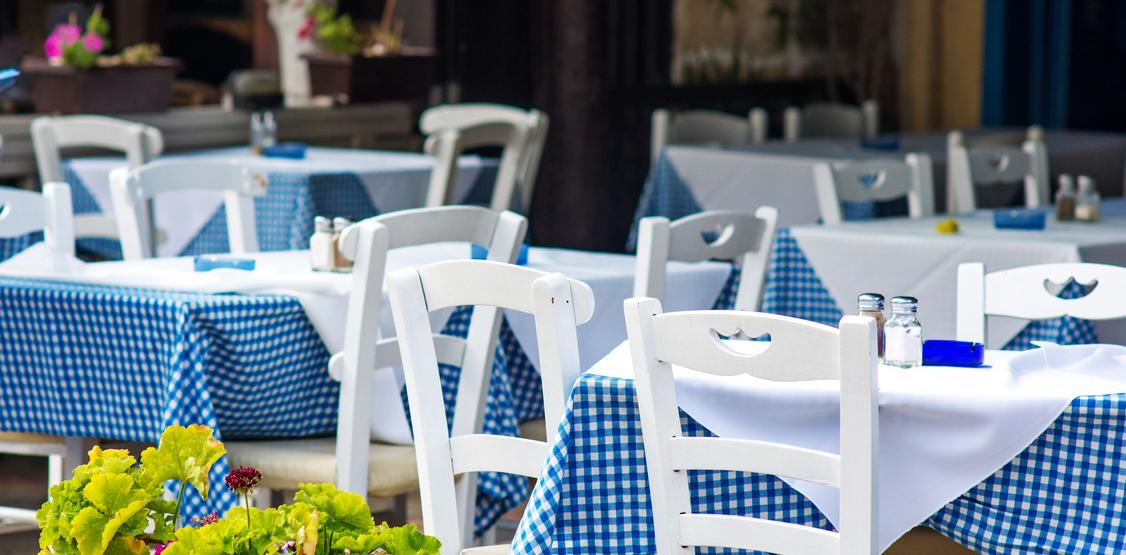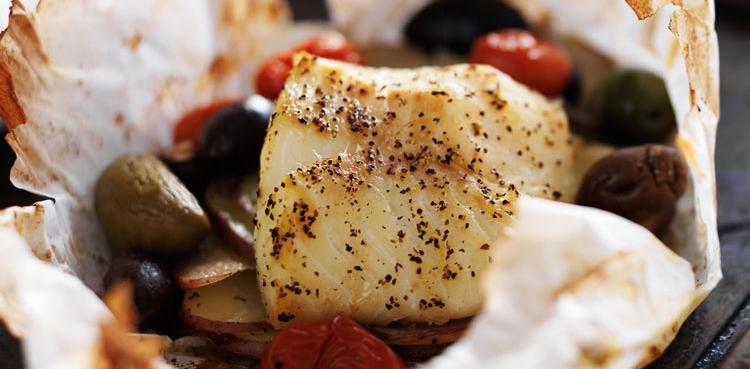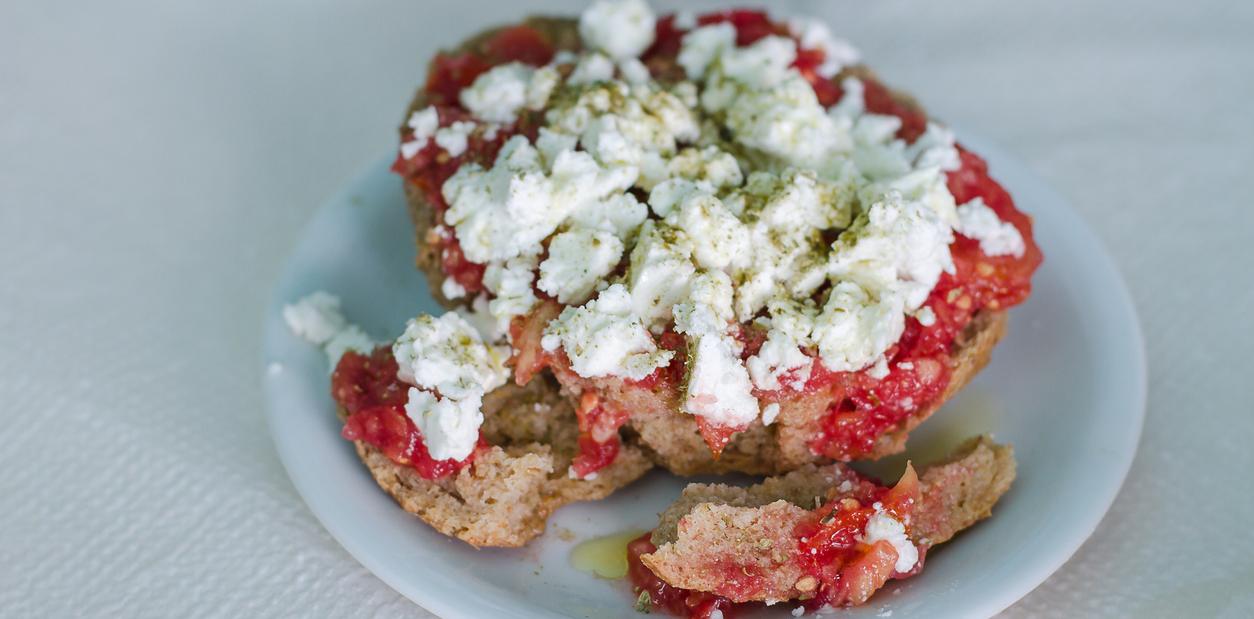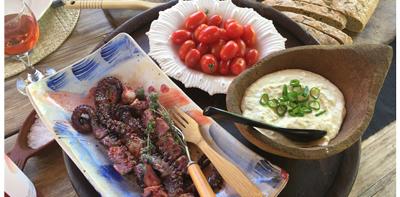Share This
Crete is the largest and most populated of the Greek Islands. Look on a map and you’ll find Crete at the southernmost point of the Greek archipelago, surrounded by the Sea of Crete to the north, the Libyan Sea to the south, and the Mediterranean Sea to the west. Over the centuries, Crete was invaded and ruled by various empires (Minoans, Romans, Byzantines, Venetians, Egyptians, and Ottomans) until 1913, when it became part of the Greek state.
Because of its remote location and centuries of foreign occupation, Cretans have developed distinct traditions, culture, and an unforgettably delicious cuisine. They are largely independent, growing and producing much of what they consume on the island. Traditionally, Cretans have relied upon an abundance of fresh fruits and vegetables, legumes, aromatic herbs, copious amounts of olive oil, bread, moderate amounts of fish and dairy, honey, wine and raki (a strong alcoholic beverage, akin to grappa, and a byproduct of the wine making process), along with small amounts of meat.
Crete’s cuisine is simple and rustic, extremely fresh, and largely dictated by locale, season, and what the land produces. Spices are used sparingly, with the exception of cumin and cinnamon. Instead, wild herbs such as oregano, marjoram, thyme, mint, laurel, and sage feature prominently in Cretan cooking. One-pot meals and vegetable and legume stews form the backbone of Cretan cuisine.
The Cretan diet and lifestyle have been studied extensively and are linked with longevity and low rates of chronic disease. Perhaps it’s the more than 100 varieties of horta (edible wild greens) that flourish on the island. Or perhaps it’s the strong social and family ties in Cretan society. Connecting with others, especially by slowing down and gathering around the dinner table with family and friends, is essential to their way of life. In Greece, there’s a term called philoxenia, which roughly translates to hospitality. But to Greeks, philoxenia means so much more. It’s a generosity of spirit, a friendliness to strangers, a courtesy shown to those who are far from home, a gesture such as welcoming someone into your home and sharing a meal with them.
Mezedes (appetizers/small plates) are a common part of the Cretan diet and are ideal for sharing and socializing. Common mezedes include:
Dakos: A staple of the Cretan table. Twice-baked barley rusks topped with grated fresh tomato, myzithra (a soft, creamy, mildly sweet-sour-tangy cheese with a ricotta-like consistency/texture made from sheep or goat’s milk), herbs, often wild oregano, then drizzled generously with extra virgin olive oil.
Horta: Wild greens are a hallmark of Cretan cuisine. Stamnagathi, a wild chicory, and vlita (amaranth), are plentiful in the hills and mountains of Crete. Their leaves are incorporated into salads or boiled until tender and then served warm or at room temperature, dressed simply with extra virgin olive oil, lemon juice, and salt.
Sofegada: a slow-cooked medley of vegetables stewed in a generous amount of Cretan olive oil.
Fava: In Italy and elsewhere in the Mediterranean, fava refers to green broad beans. However, in Greece, fava refers to a creamy dish of pureed yellow split peas.
Kaltsounia: Savory pies, such as summer squash and cheese, or potato and pumpkin, wrapped in phyllo. Savory-sweet versions are filled with myzithra, often flavored with cinnamon or lemon zest, and drizzled with honey.
Hohliol: Snails play a prominent role in the Cretan diet. There are as many recipes for snails as there are for wild greens. Mountain snails are collected after rainfall and prepared in a variety of ways, including simmered in vinegar and wild rosemary (hohliol bourbouristoi).
Along Crete’s coastlines, you’ll find octopus hanging in the sun to dry. Grilled octopus, grilled or fried squid (calamari), cured fish (lakerda), grilled sardines (sardelles), and small fried fish (gavros tiganitos) are common seafood mezedes, along with marinated anchovies (gavros marinatos), mussel or prawn saganaki (cooked with tomato sauce and cheese), and taramasalata (a creamy fish roe dip)
Have we got your taste buds hungering for the delicious flavors of Crete? Join Oldways October 21-28, 2018, as we travel around Crete with award-winning chef Ana Sortun and local Greek cookbook author and cooking teacher Aglaia Kremezi. Early bird pricing (save $300!) ends June 30, so sign up now.
Learn more about our Crete Culinara trip.
Want biweekly Med Diet information and recipes in your Inbox? Sign up for our Fresh Fridays newsletter by clicking the Subscribe button at the bottom of this page!
Join the Make Every Day Mediterranean Club Facebook group for additional information and support.





Add a Comment